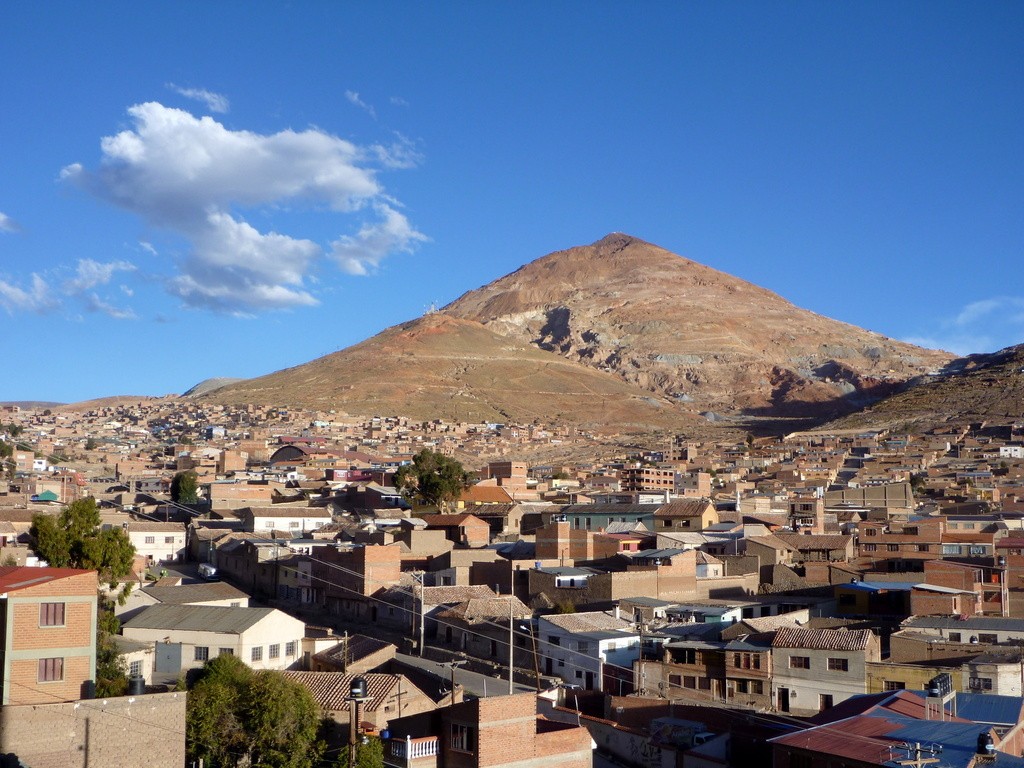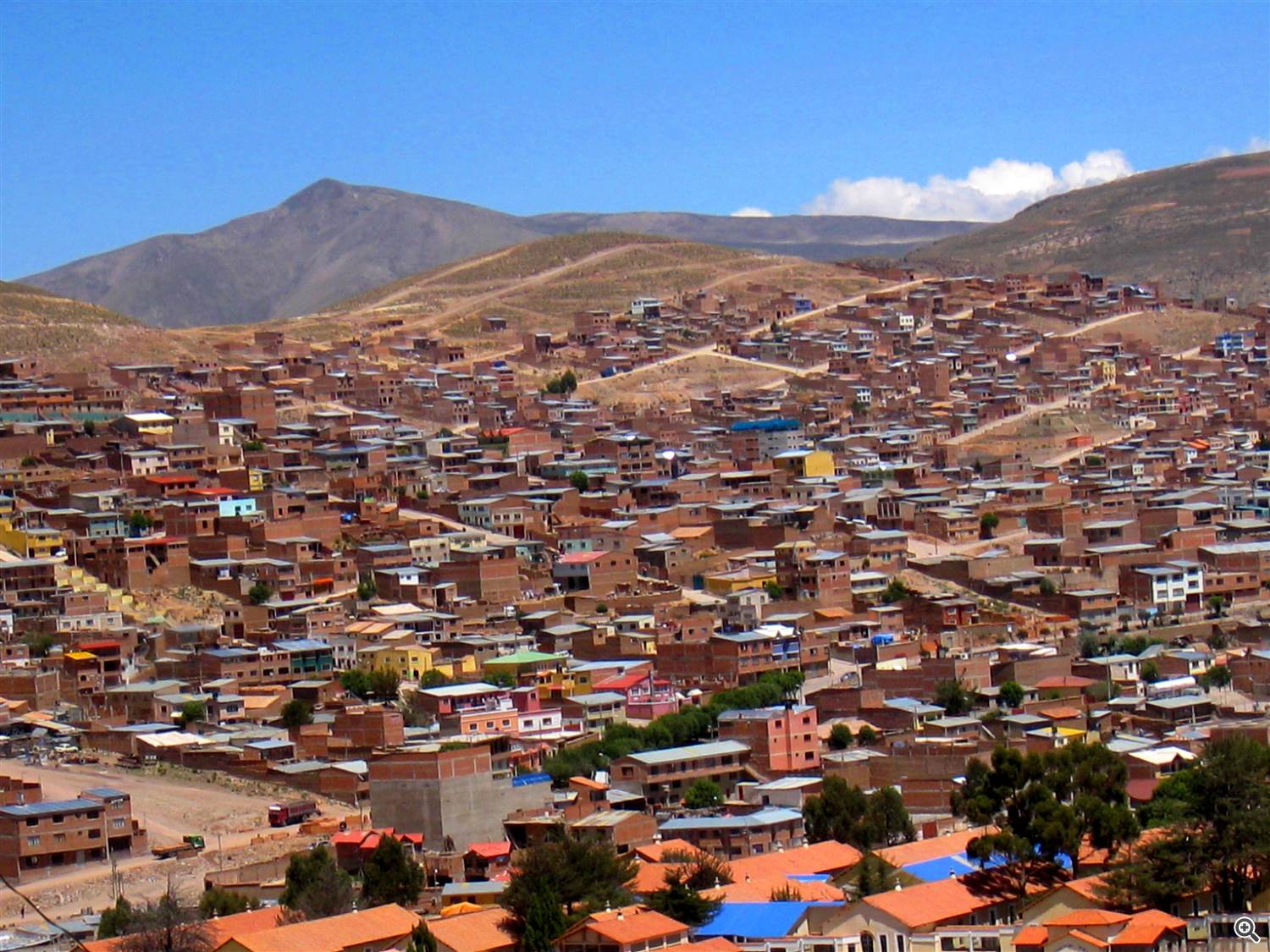Surprising, but traders are also human beings, and as all humans, they have their own superstitions, omens, symbols of fortune and bad luck, etc. Many successful traders love to come back to the places where they once (or twice, or many times) earned lots of money, and others tend to visit places where someone else earned their capital...
Many traders try to attract luck by visiting statues of a bear and a bull - long-standing symbols of stock market and finances. These animals, by the way, have even entered traders' folklore and settled in market vocabulary: we all know the terms "bull market" and "bear market". In Frankfurt, the composition of the two beasts is placed in front of the Frankfurt Stock Exchange; and every broker from Wall Street considers a good luck to touch the Charging Bull's horns on the way to work. NYSE gives each company, which places its securities at the stock exchange, a special commemorative figurine representing a bull and a bear fighting. Electronic exchange NASDAQ sales the same kind of products on their website. What other gods do traders worship?
The Mecca of stock traders all over the world is, undoubtedly, Wall Street
The best time to visit the heart of the financial world is during the week day to see the world’s main financial districts in action. In the morning thousands of suite-wearing people are running into impressive buildings home to world-known banks and financial institutions. The most recognizable buildings in the area are New York Stock Exchange, Federal Reserve Bank, Federal hall, India House, the American International Building, 20 Exchange Place, 40 Wall Street and One Wall Street, not to mention the most important symbol of stock markets - the "Charging Bull". They say that touching bull's horns brings you good luck and success in business. However, some tourists/traders have already changed this superstitions for other, lower parts of this bronze animal...
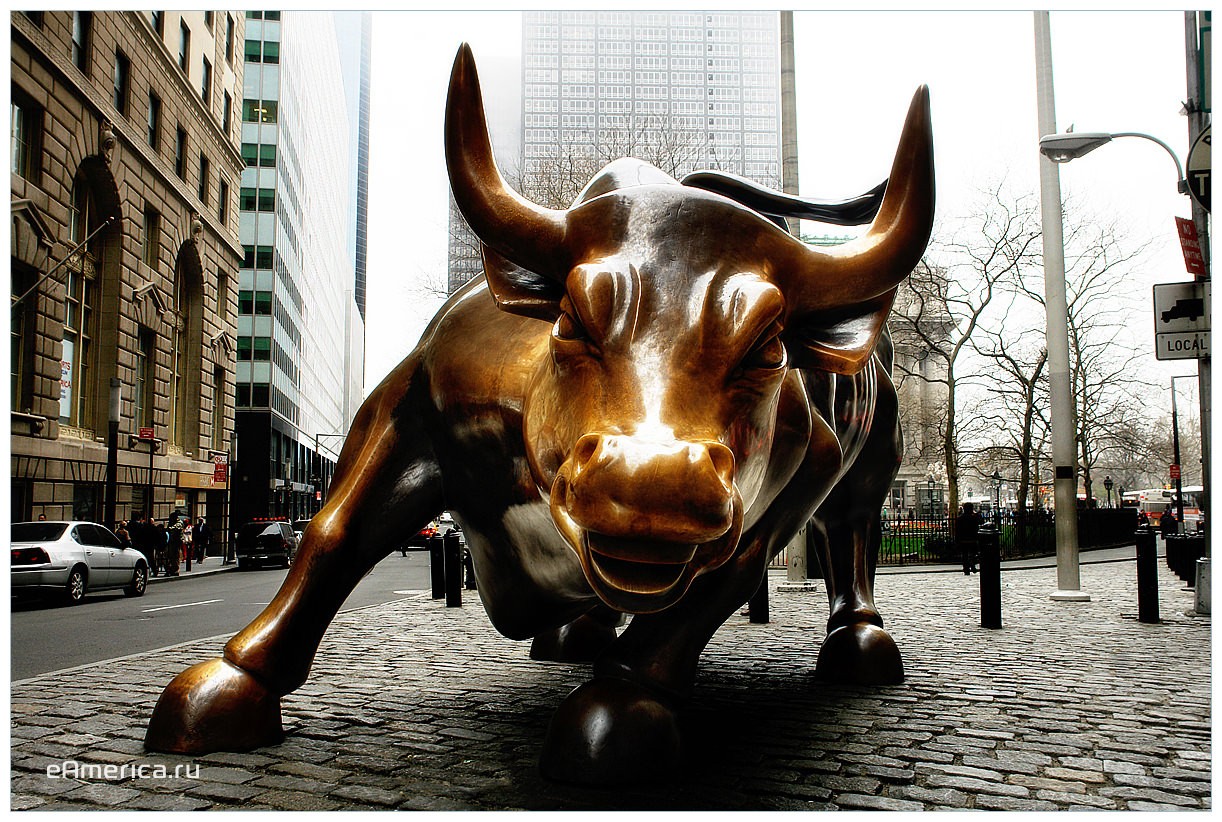
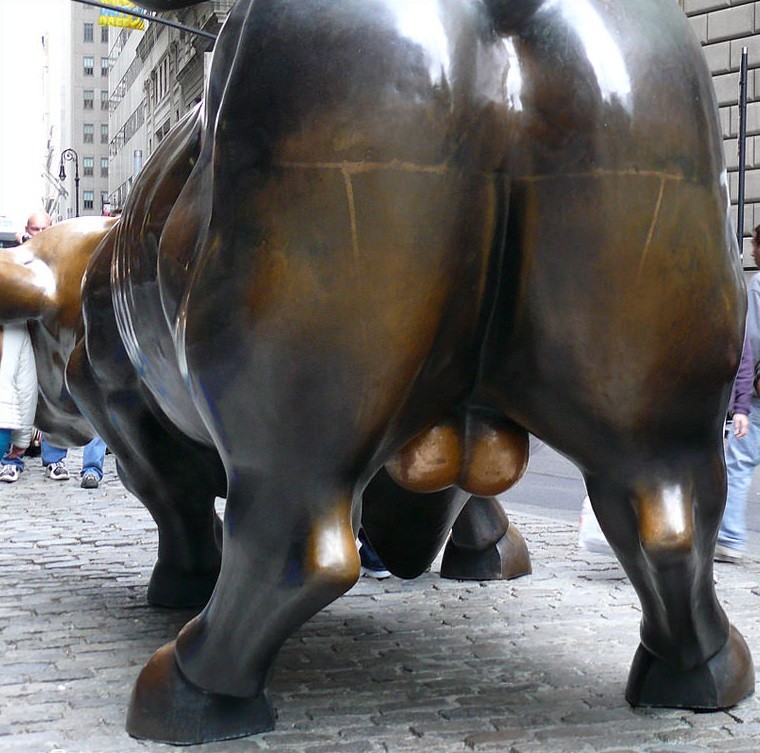
Bear is another symbol of financial markets and stock exchange, symbolizing falling markets though
Another traders' touristic atraction is Frankfurt Stock Exchange (FWB Frankfurter Wertpapierbörse). Its monumental structure originates from the 19th century. In front of the exchange there is an impressive statue of a bull and a bear. The
bull in its upright stance is meant to suggest initiative and optimism,
the bear stands for the opposite. In its crouching stance it is clearly
set apart from the bull and symbolizes recession on the stock market.
The bronze was donated by the stock exchange on the occasion of the
celebration of its 400th anniversary. It was erected shortly before the
renovation of the stock exchange was completed in October 1988.
"Bull & Bear" is probably the best-known work by Reinhard Dachlauer,
who was born in Frankfurt in 1922 and considered as one of the most
talented animal sculptors of the 20th Century.
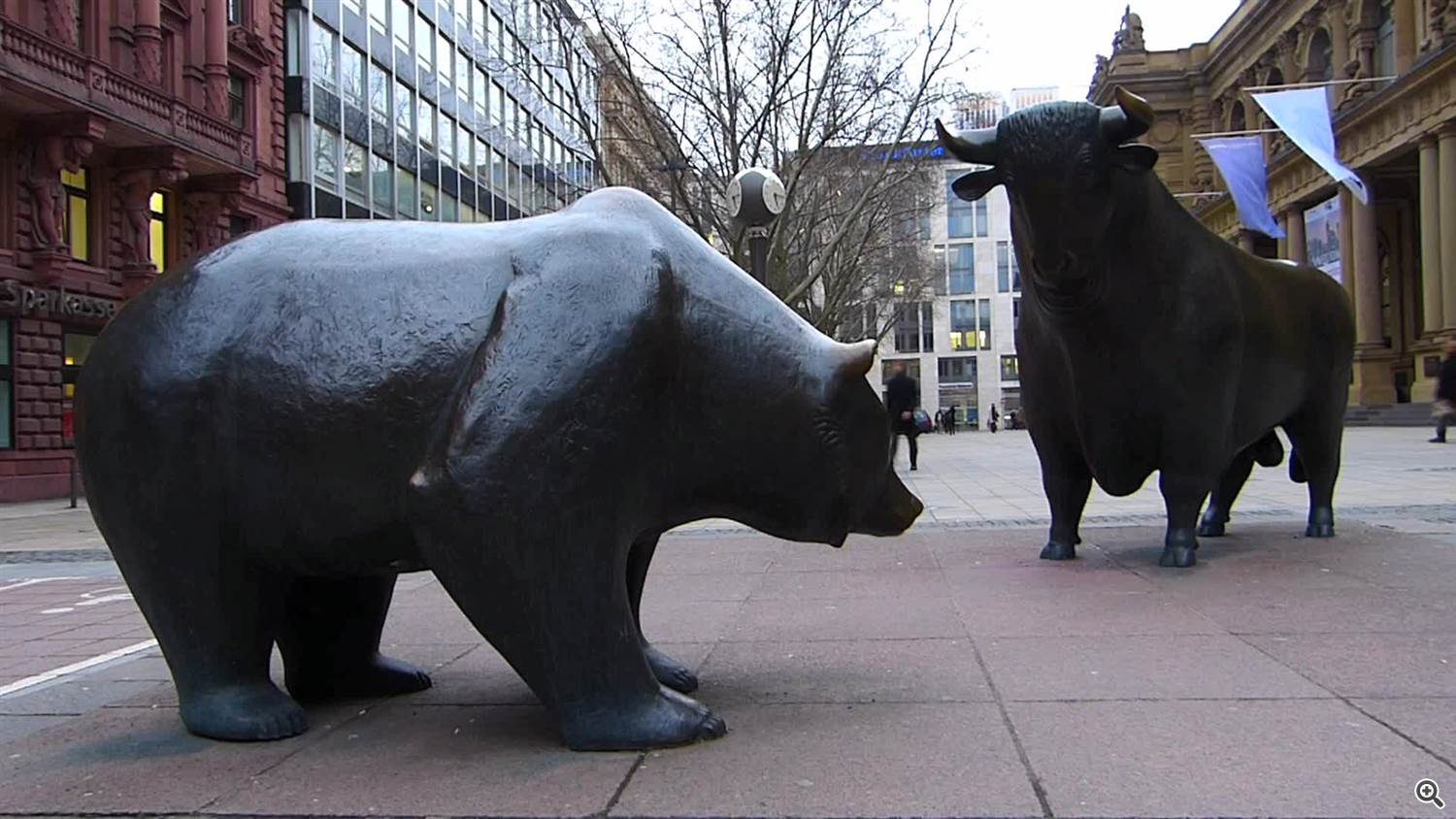

For some traders, a desert symbolizes fertility
South American country of Chile is the absolute leader in the production of copper. Those who trades copper, know how important news from Chile are. Augusto Pinochet raised his country by means of this yellow metal.
In the Atacama Desert, which is, inter alia, the driest in the world, is the largest copper deposit. This field is developed by open method, and excursions to this place are free of charge. Sculpture of a giant hand in the Chilean Atacama Desert is the emotional symbol of vulnerability, helplessness and loneliness in the sands: buried under the ground as if a giant asks for help from a higher power. Monument "The hand of the desert" (Mano del desierto) 11 meters high was created by the Chilean sculptor Mario Irarrázabal in 1992. This masterpiece, constructed of iron and cement and towering in the middle of the burned-out sandy landscape, is the only thing which reminds about life within a more than 10 km distance.
Many of you will be surprised, however, I say that more than a million people live in the Atacama Desert today (according to the influential periodical "National Geographic"). They are settled in coastal cities, mining towns, fishing villages and urban oasis.
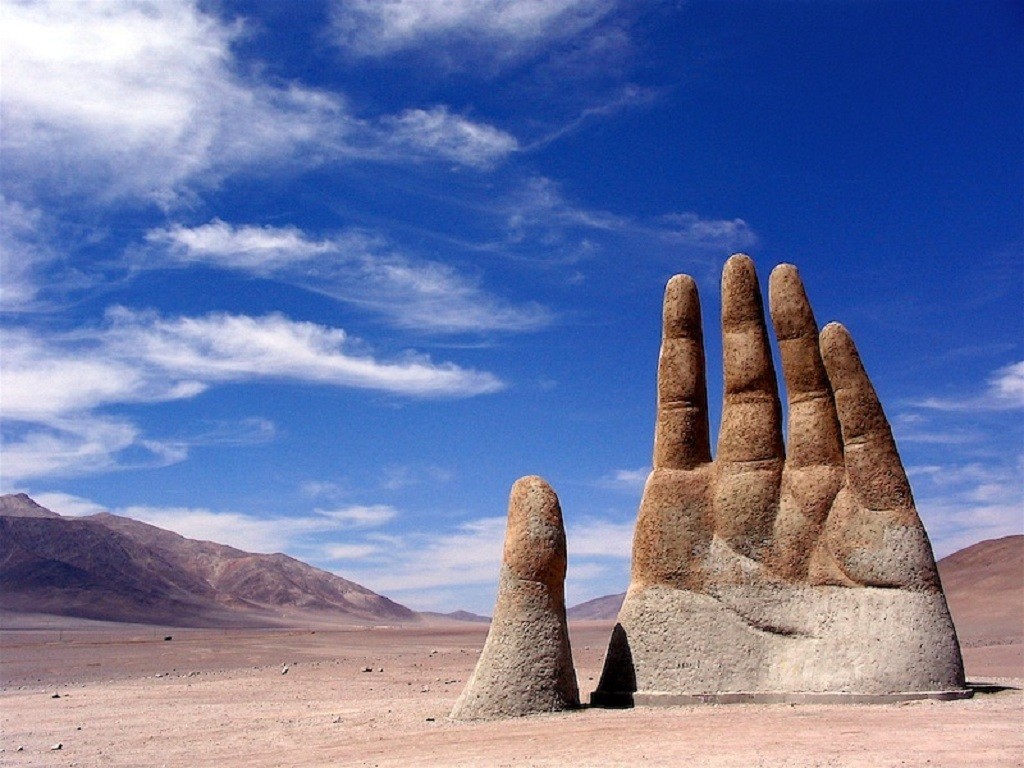

Potosi - the silver city, which is included in the list of UNESCO World Heritage Site and a regular place of pilgrimage for traders
Traders come to the Bolivian Potosi to pay tribute to the mountain Cierro Rico, which in the period from 1556 to 1783 gave the world tons of silver.
Descent to the bottom of Cierro Rico mountain brings you back to the era of silver fever. Despite the improvement of the technology of production, working conditions for miners are almost the same as 500 years ago, when the Spaniards forced the Andean peasants to work on silver deposits. Production is carried out in the traditional way: a group of several people extract ore using picks and shovels, and move it on trolleys. An excursion to mine would reveal you inhumane working conditions: poorly ventilated mines, safety is virtually absent, the air is full of malicious dust, water trickling down from the ceiling and walls, not to mention a high risk of collapse. Thousands of miners work in such conditions, chewing coca leaves and drinking a strong, 96% liquor during breaks, hoping to find a silver-rich vein. Ice-cold air at the beginning of the path is replaced by the tropical heat as you go further. In some places you can not go without bowing your head, and in some sections of the path you need to climb on all fours. At the entrance to the mine there is a statue of Uncle - the spirit of the mountain of Potosi. He loves tobacco, but is lately satisfied with cigarette stubs.
Bolivia used to be the main player in the silver market, but those days are long gone. Potosi is sinking into the abyss of poverty, but, nevertheless, is still one of the emblematic places for traders.
